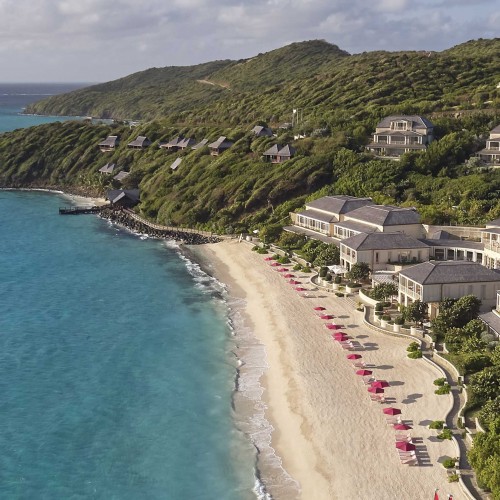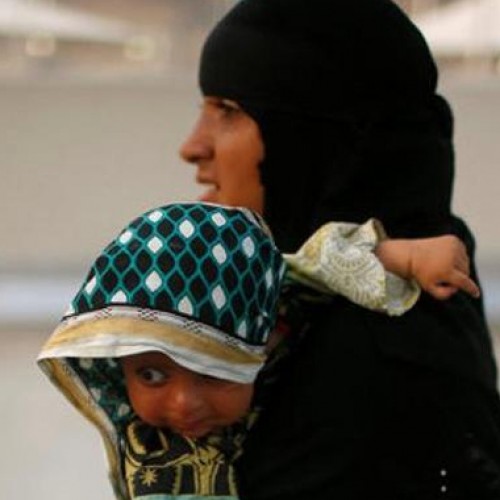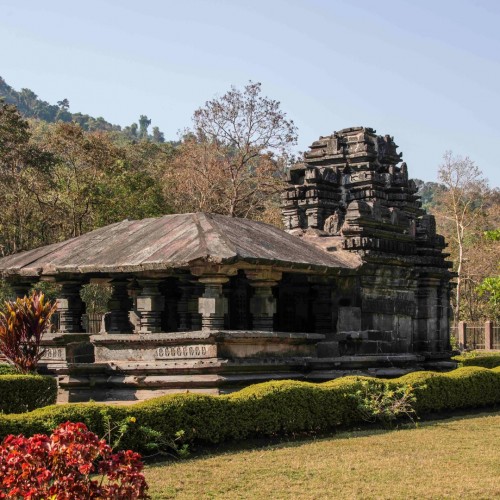Missing Link: Afro-India tourism ties
What makes tourism a very attractive sector to tap into is not only the economic benefits that it brings to an economy but the manner in which it brings. Its socio-economic impact is better than most other sectors. Its key comparative advantage over other sectors is the socio-economic impact that tourists’ spend have across the tourism value chain right upto small-time carpenter to agriculturists to artisans’ skilful handicrafts. And if that is not all, its huge impact on conservation and preservation of wildlife, flora and fauna and dying arts and crafts are equally immense. Women empowerment and potential to create peace in disturbed areas are some of its other deliverance. Of course tourism also needs to be managed for its unwanted footprints.
The recently concluded largest ever India- Africa Summit in Delhi, aimed at creating trade and investment opportunities in Africa, also highlighted the shared history of the two regions, the similarities, the common scourge of poverty, illiteracy and terrorism to immense opportunities. It is in these contexts that the two regions need to look very closely at developing tourism ties that rivals those of the mature tourism markets of the Europe.
Tourism is a powerful vehicle of economic growth and job creation that these two regions need most. The sector alone, directly or indirectly, is responsible for creating about 9 per cent of world’s jobs and 9.1 per cent of global GDP. According to a WTTC estimate the sector alone can create 3.8 million jobs in sub-Sahara Africa over the next 10 years.
India: Growing into one of the world’s biggest source markets
Whereas Africa is a continent of more than 1.1 billion people across 54 nationalities, India, a sort of continent in itself with its multi-ethnic and landscape diversity, boasts of a population which is nearing 1.3 billion mark. Africa’s total GDP is worth over $2.8 trillion and India’s over $2 trillion.
About 18.33 million Indian travelled overseas last year, a number that UNWTO estimates will swell to 50 million by 2020. India’s macroeconomic indicators are doing fine and the economic growth rate, riding on the weak oil price, has climbed from about 5 per cent last year to 7.5 per cent in 2015. The now never ending story of economic crisis – First America, then Europe and now the Chinese downturn, means that India remains the only market amongst big economies that is looking at a sustained growth in the coming years.
And therefore the Indian outbound travel is expected to witness a spurt in growth that has been little subdued since 2008 when global economic recession began to ail economies worldwide.
However, of the 18 million plus Indian who travelled overseas last year, the sub-region distribution across South East Asia, Europe, Middle East, North America were all strong numbers but for Africa, the second largest continent in terms of both its size and population, whose share is less than 5 per cent or well under a million currently.
Globally Morocco (10 million – Year 2013) and Egypt (9.2 million – Year 2013) represent Africa as top two tourist destinations but ranking distant 28th and 31st respectively and not a single representation from sub-Sahara Africa in the top 42 destinations by international arrivals (Source: India Tourism Statistics 2013).
Of the 54 countries in Africa only Nigeria, South Africa, Egypt, Kenya and Mauritius have seen any significant Indian arrivals. And Beyond South Africa, Egypt, Kenya and Mauritius, it is difficult to point to any destination from the continent making any noticeable effort in marketing their destination in order to woo the growing number of Indian travellers. More recently small island destination like the Seychelles, Reunion Islands have entered the India market. Few others have kept it limited to destination showcase at popular Indian trade fairs like SATTE.
It is thanks to South Africa’s market development activities that the destination has been able to “double its number of Indian leisure travellers between 2009 and 2013,” informs Hanneli Slabber, Country Manager – India, South Africa Tourism.
TRAC Representation, one of India’s most reputed and probably the oldest destination marketing company has represented Kenya in India since 2009. According to Rajeev Nangia, TRAC COO, today India is the largest tourist source market for Kenya in Asia and one of the top five markets globally.
South Africa and Kenya amply prove that Indians aren’t wary of travelling to Africa given what Slabber says “lack of destination familiarity” is addressed amongst Indian trade and travellers. “From destination familiarity point of view there is definitely a problem in Indian looking at Africa as a continent. Despite South Africa being 4500 miles away from Ebola outbreak and never witnessing any Ebola case, there were people cancelling South Africa because of Ebola. We saw the first effect within 24 hours! There is no understanding of the geography of Africa,” Slabber argues and quite rightly so.
She also pitches for a stable Africa in order to attract tourism. “Something happens in Nigeria or Kenya and it affects the whole of Africa,” she says underlining aspects of stability and peace for the development of tourism in the region as well as better African understanding and visibility in India.
For so long as Africa is not beginning to look at India’s growing potential as a tourism source market and set their shops, the continent will continue to scratch at the surface. Talk of Europe and majority of the countries have their tourism offices or Representation Office in India, which is not the case with African countries. And therefore the difference is telling in terms of numbers that these two destinations attract despite Africa being closer and more competitive.
Africa: The source market
When it comes to tourism numbers, Africa at the moment is taking more than it is giving to the rest of the world. Most of the African travel outside the continent is limited to business and trading. However, according to Africa Economic Outlook Report, Africa’s GDP growth is expected to strengthen to 4.5% in 2015 and 5 % in 2016 after subdued growth in 2013 (3.5%) and 2014 (3.9%). The report also says that Africa may as well be at the threshold of looking at the pre-economic crisis level growth.
According to an ADB (Africa Development Bank) 2013 Report, the African economy is growing faster than any other continent. And therefore a growing middle class, rising income and economic prosperity amongst the African will increasingly make the continent an attractive source market.
Africa has its share of challenges from poverty, gender inequality and low literacy rate to terrorism, but so does India that has virtually attracted all the leading National Tourism Boards who have set up their marketing offices here. Africa is a growing continent with both its micro and macroeconomic indicators pointing to a wealthy and prospering Africa. And therefore, now is the time, and in line with country’s India-Africa Forum Summit vision, to start working on a source market development strategy that closely works with Africa.
In 2014 India received 7.68 million international arrivals – its share of international tourist arrivals being at a paltry 0.68 per cent. Currently India ranks a sad 12th in tourist arrivals in the Asia-Pacific region and a distant 41st globally. Of the total 7.68 million international arrivals, Africa contributes just about a meagre 3.95 per cent (275,271 arrivals: India Tourism Statistics 2013) share of total international arrivals into the country.
Currently India’s only overseas tourism office on the continent is in Johannesburg. We at least need two more immediately to represent India’s tourism interests on the continent – One in Nigeria, Africa’s most populous country, that can also cater to other West African countries and the other in African Maghreb or North Africa. Ethiopia or Kenya can be other Overseas India Tourism Office to market India in East Africa.
According to FAITH Vice Chairman and IATO Senior Vice President Sarab Jit Singh currently the Beijing and Johannesburg, virtually two opposite ends of the world, with additional charge of Africa is being looked after one person. “India has never been marketed properly in that (Africa) part of the world”, he said.
We have suggested the government that till the time any of Overseas Tourism Office does not have its head officials at Ministry of Tourism in Delhi should be given the responsibility to manage these offices, informs Singh. He says that country one-tenth in size of India like Malaysia has 42 offices with more than 25 million tourist whereas India gets 7.7 million tourists.
There is a huge Tourism potential between India and Africa. Indian diaspora is settled in various parts of Africa like Kenya, Tanzania, Mauritius, Seychelles and South Africa. More than 50% population of Mauritius are people of Indian origin so has Durban in South Africa. The North Africa has been a lucrative Medical Tourism market but that has happened without any government efforts. Besides leisure and FIT travel is also beginning to pick up from most of Africa, some of whom are also coming to India but the country’s share at the moment is very small. ‘Student’ segment is another target market many of whom are already coming to India.
“It is surprising that despite these advantages tourism from Africa to India is not increasing the way it should. Ministry of Tourism need to aggressively market India and also involve carriers like Air India, Ethiopian Airlines, South African Airways and Kenya Airways its marketing effort,” says IATO President Subhash Goyal.
Connectivity
Connectivity particularly direct air services between the two destination is key to increasing tourist traffic. Although African desti- nations are accessible by carriers like Turkish Airline, Emiartes, Etihad and Qatar there are fewer direct services. Since South African Airlines discontinued its direct Mumbai-Johannesburg flight earlier this year the destination has been losing Indian MICE groups and the numbers are 12 per cent (For the January-August period) less than last year.
And therefore, its carriers like Ethiopian Airlines, Africa’s largest carrier, that will be primary driver of tourist traffic from India to Africa as the airlines not only flies from the two Indian cities of Delhi and Mumbai but also offers a comprehensive network of 52 cities in Africa. Besides, bilateral ties such as Ethiopian’s codeshare with Indian Airlines giving both the carries access to more cities on each others network will be key to creating an attracting network of air transport that can potentially woo increasing number of tourists.
According to Tadesse Tilahun, Regional Director, India Sub-continent, Ethiopian, his carrier has been witnessing a steady increase in its tourist traffic and India tourist travellers are increasing travelling on its network to Adis Ababa, Dar-es-Salam, Nairobi and destinations in South Africa. But there are fewer such connectivity options available right now to right about, though Middle Eastern carriers such as Turkish not only offer viable route network but also comprehensive network in Africa.
You might also like
Mandarin Oriental, Canouan makes its debut in the Caribbean
Mandarin Oriental, Canouan brings the Group’s renowned levels of service to the Caribbean for the first time. Located in St. Vincent and The Grenadines, the resort sits on an immaculate stretch of
India is a top market for cruising from Singapore with double digit growth
Cruising from Singapore is steadily becoming one of the key activities Indian travelers consider when planning their holiday itinerary in the Lion City. In 2016, Singapore reported 1.2 million cruise
India may allow women Haj pilgrims over 45 years to travel without male guardian
Nearly half of an estimated 170,000 pilgrims who went for the annual religious celebration in Saudi Arabia from India this year were women, said the officials. Women over the age







